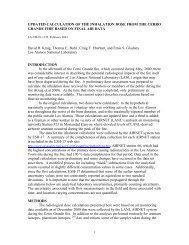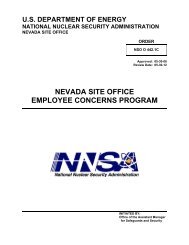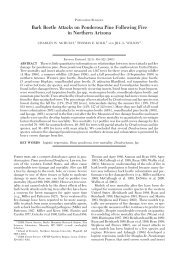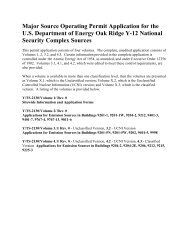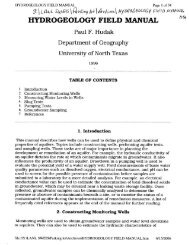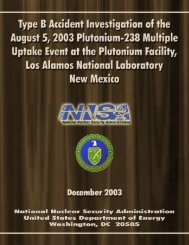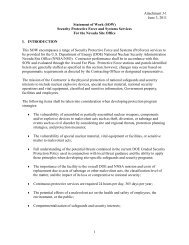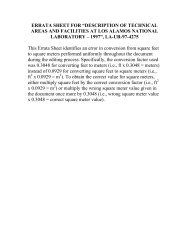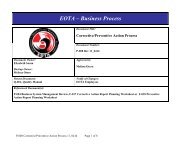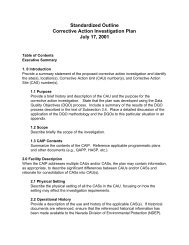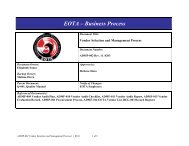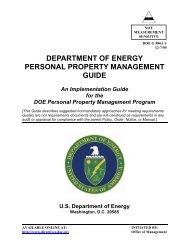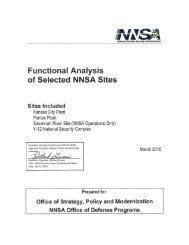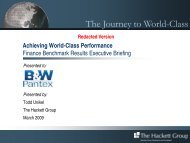An Analysis of Passive Soil Vapor Extraction Wells
An Analysis of Passive Soil Vapor Extraction Wells
An Analysis of Passive Soil Vapor Extraction Wells
Create successful ePaper yourself
Turn your PDF publications into a flip-book with our unique Google optimized e-Paper software.
WSRC-TR-2000-00182<br />
MetLab Treatability Study: June 2000 Update<br />
Flow Control Enhancement <strong>of</strong> Mass Removal<br />
Flow control enhancement has been proven to increase mass removal by at least a<br />
factor <strong>of</strong> 2 (May et al., 1994 and Rossabi, 1999). Theoretically, without any engineering<br />
controls, the volume <strong>of</strong> soil gas outflow is approximately equal to the volume inflow in an<br />
open vadose zone well. Under these conditions, air entering the vadose zone will dilute<br />
the soil gas and force the soil gas plume away from the well. The soil gas removed<br />
after an inflow event will thus be a mixture <strong>of</strong> surface air and soil gas, effectively<br />
reducing the mass <strong>of</strong> contaminants removed.<br />
With flow control which only allows outflow, the soil gas is not diluted and a step process<br />
is created which brings contaminants from further distances from the well screen with<br />
each successive outflow event. Also, when wells are not flowing out (checked inflow<br />
event), contaminants will move into the coarse grained sediments by mass transfer and<br />
will be removed during the next outflow event(s). The Baroball check valves have been<br />
observed to leak slightly during some inflow events. The leakage is probably caused by<br />
some particulate matter (dirt or insects) interfering with the sealing <strong>of</strong> the ball in the<br />
seat. The leakage has been observed to stop after the next outflow event. The leakage<br />
rate will be monitored with the flow measurements. The leakage will produce some<br />
subsurface dilution dependent on the length <strong>of</strong> the inflow event.<br />
Mass Removal Estimation<br />
Based on the concentration curves for 19 wells installed at MetLab, the mass <strong>of</strong><br />
contaminants removed can be estimated. The assumptions include a uniform average<br />
flow rate <strong>of</strong> 1 cfm out <strong>of</strong> all <strong>of</strong> the wells based on measured flow from other PSVE wells,<br />
initial concentrations estimated from the concentration trends on 5/1/98 and final<br />
concentration projected using the rate constants from approximately 2 years <strong>of</strong><br />
monitoring. Physically observed vapor flow and concentration measurements indicate<br />
mass removal from the vadose zone at the MetLab.<br />
Well flow rates have not been measured at the MetLab so PSVE flow rates from nearby<br />
wells are used for estimating the mass removal. Continuous flow measurements will be<br />
made in FY00. The average flow measured from 2 inch diameter PSVE wells at the<br />
Miscellaneous Chemical Basin and near the M-Area Basin is approximately 2 cfm<br />
during outflow events. Since soil gas is removed 50% <strong>of</strong> the time with barometric<br />
pumping, the continuous average flow out <strong>of</strong> the wells is 1 cfm. The area under the<br />
removal curves is calculated and multiplied by the flow rate to obtain the mass <strong>of</strong><br />
contaminant removed. The total mass removed at the MetLab for a given time period is<br />
the sum <strong>of</strong> the mass removed from the individual wells. The calculated mass removal is<br />
presented in Tables 4 and 5 and a graph showing the mass removal trend is provided<br />
in Figure 11.<br />
After 2 years <strong>of</strong> PSVE approximately 100 lbs TCE and 170 lbs PCE have been<br />
removed by the natural barometric pumping <strong>of</strong> wells fitted with BaroBall valves. The<br />
19




